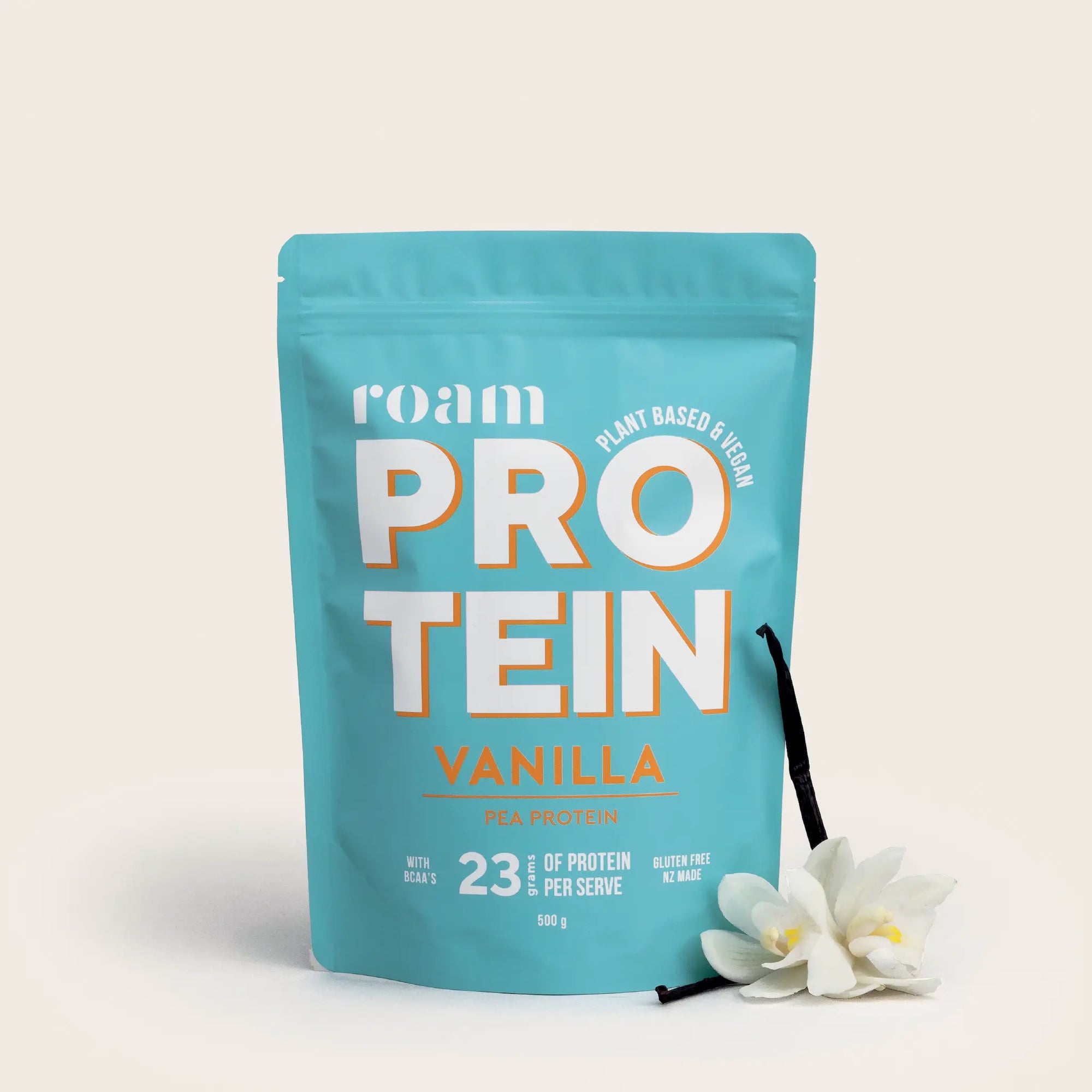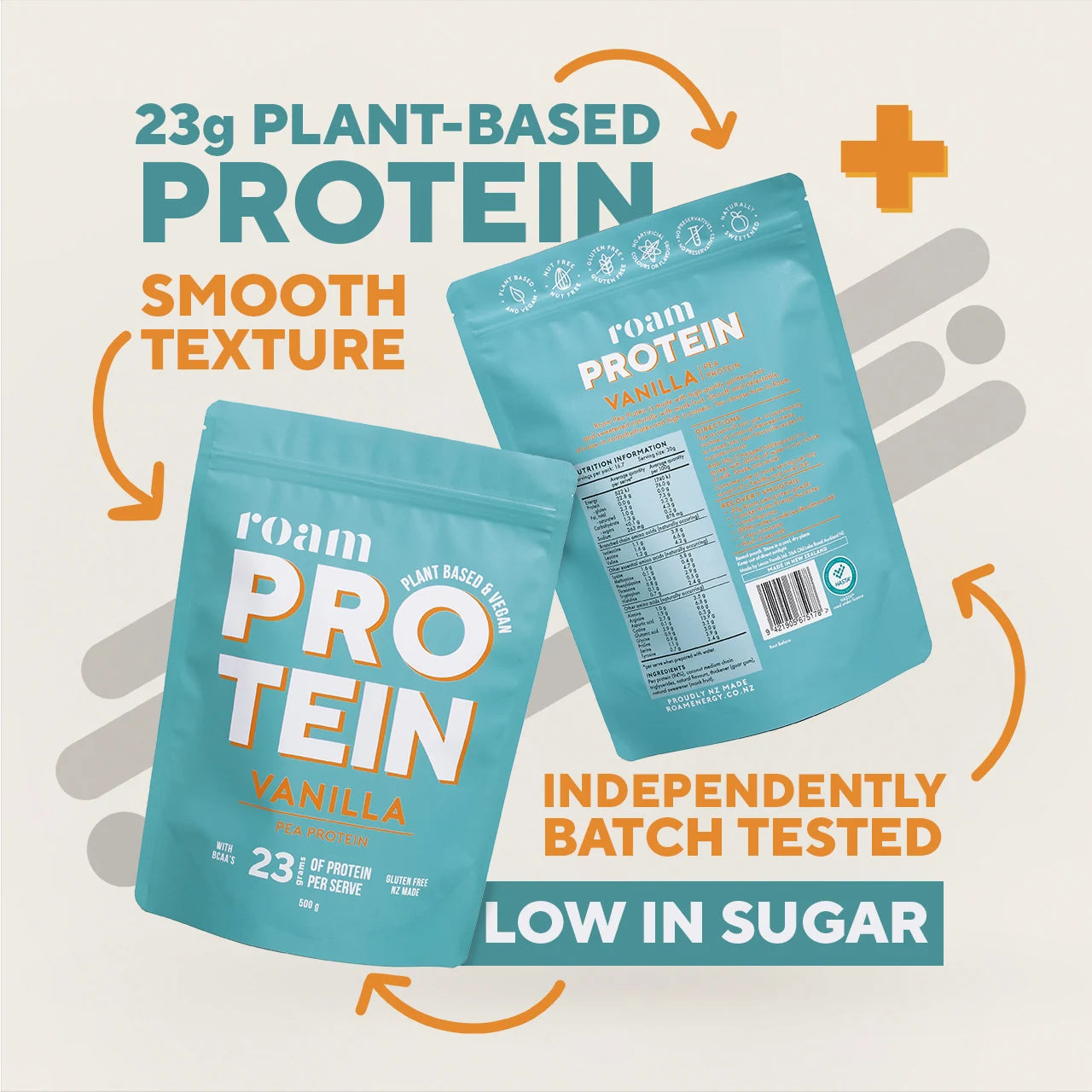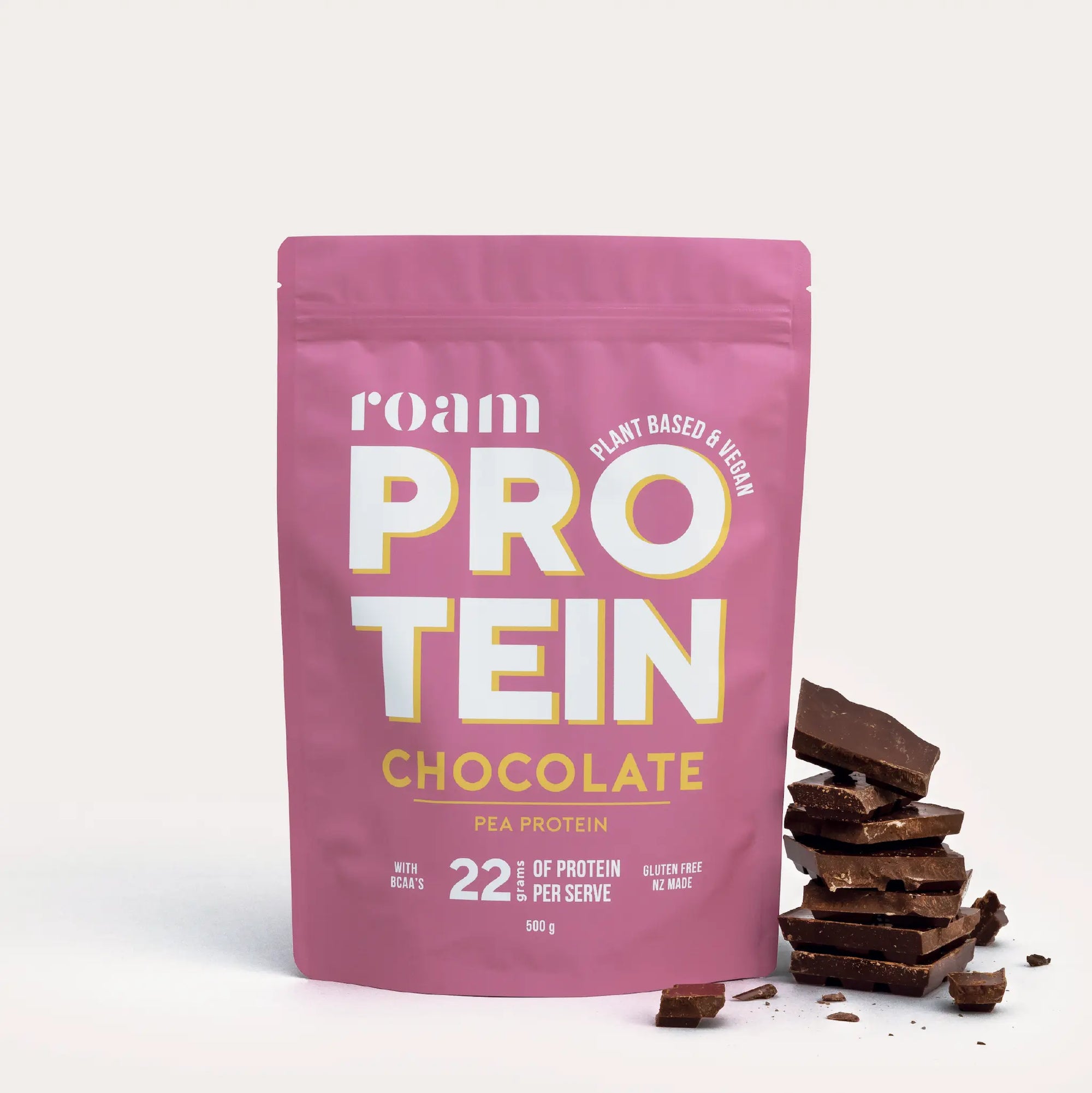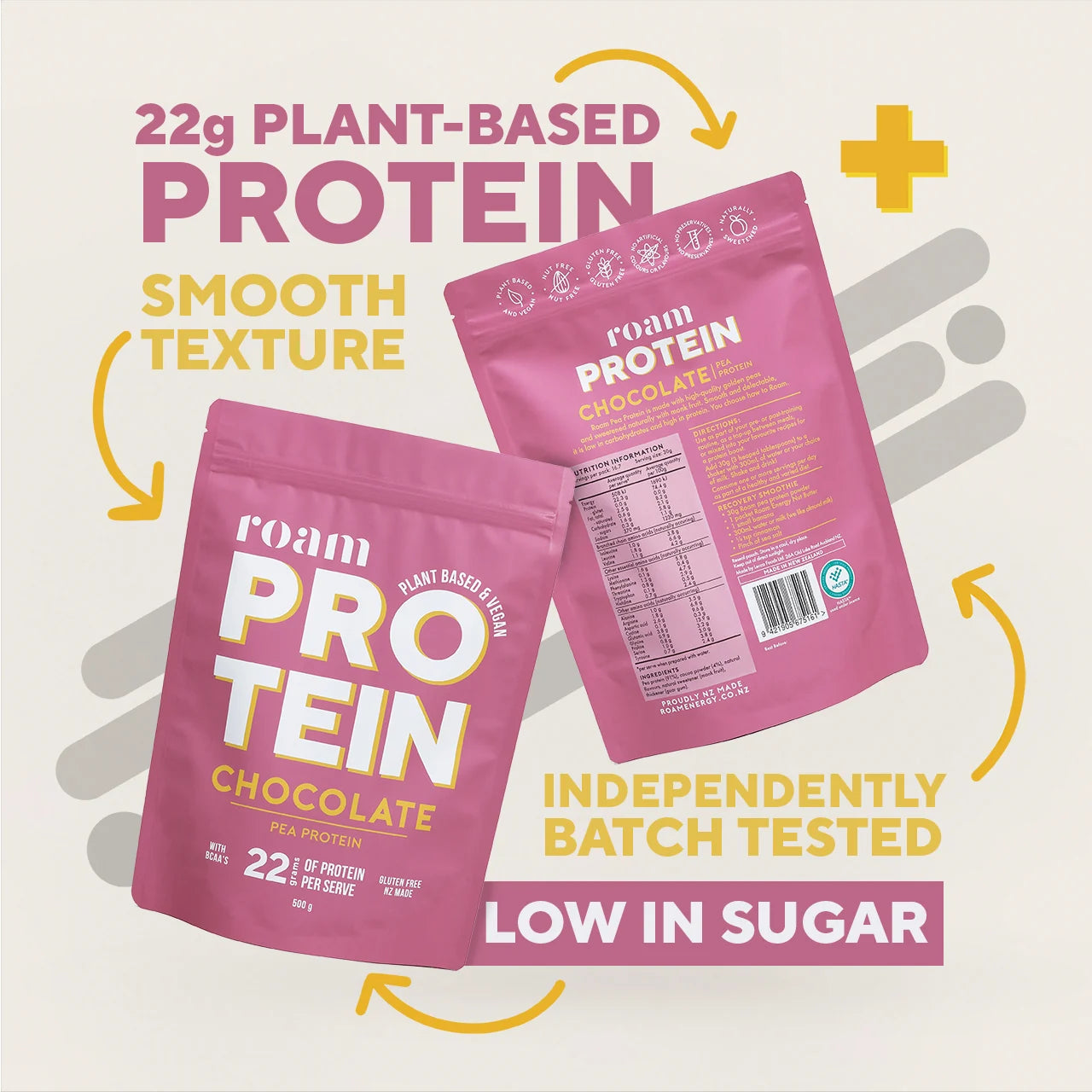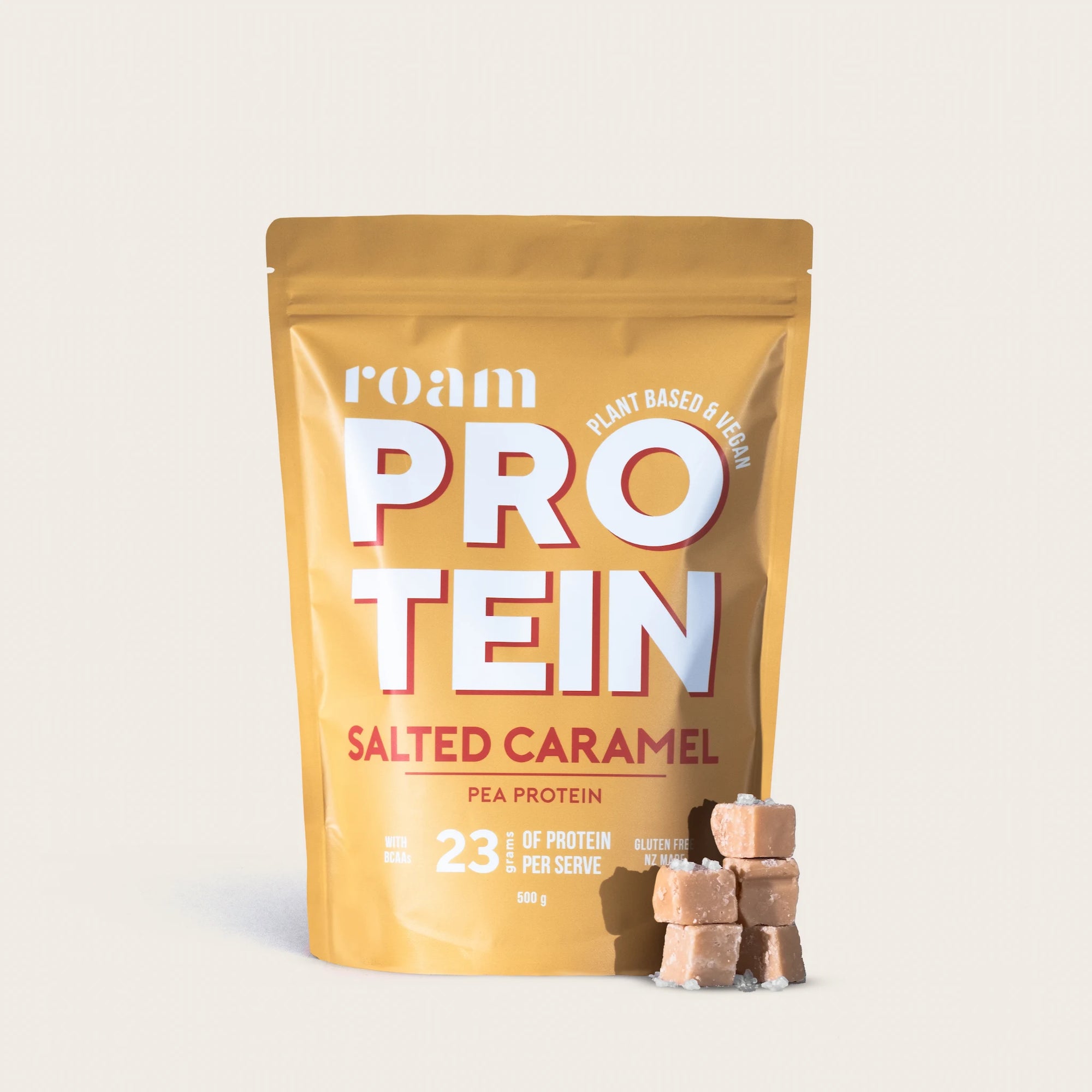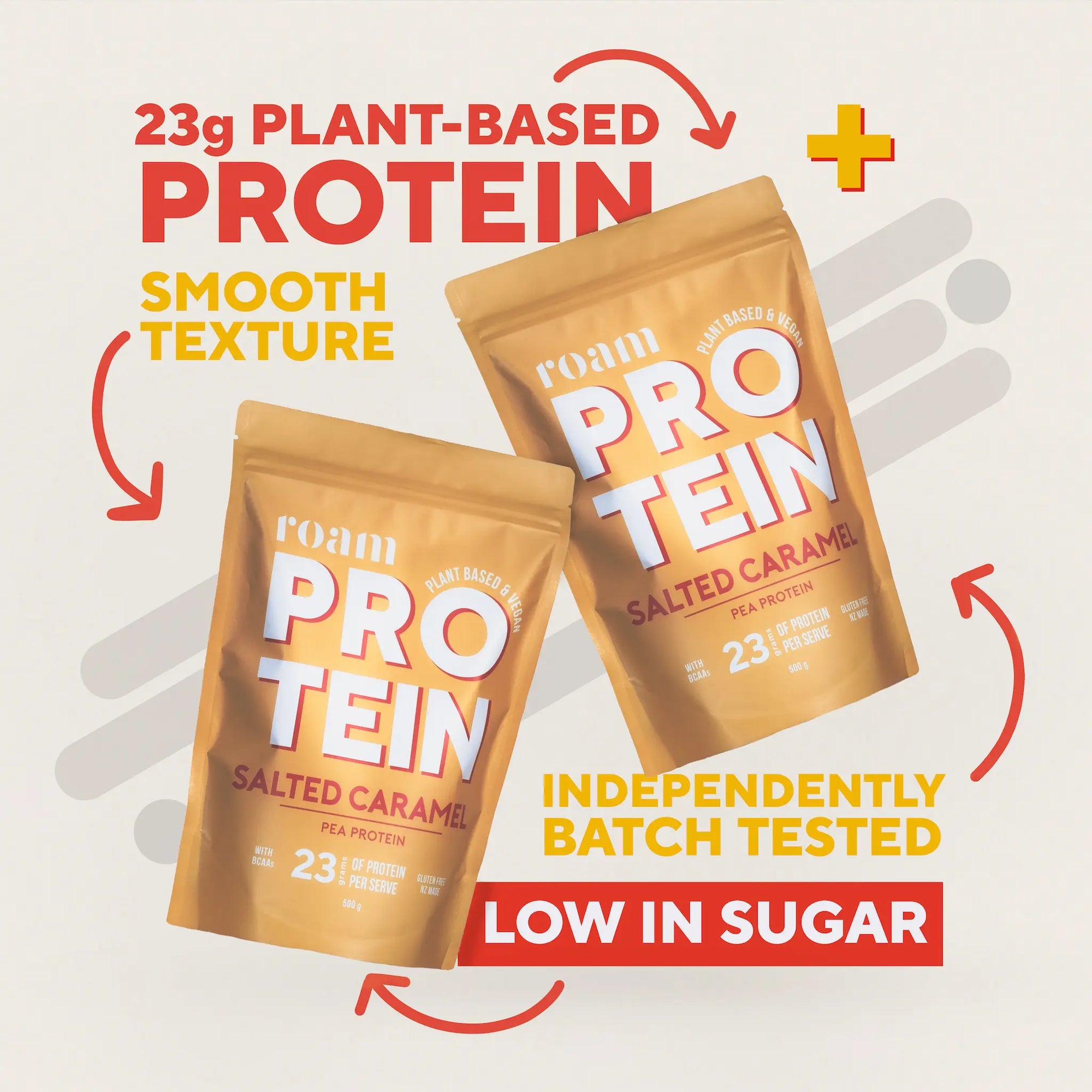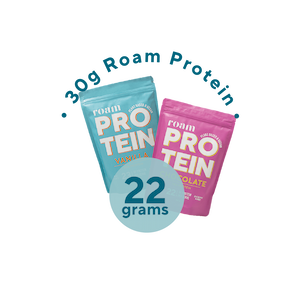
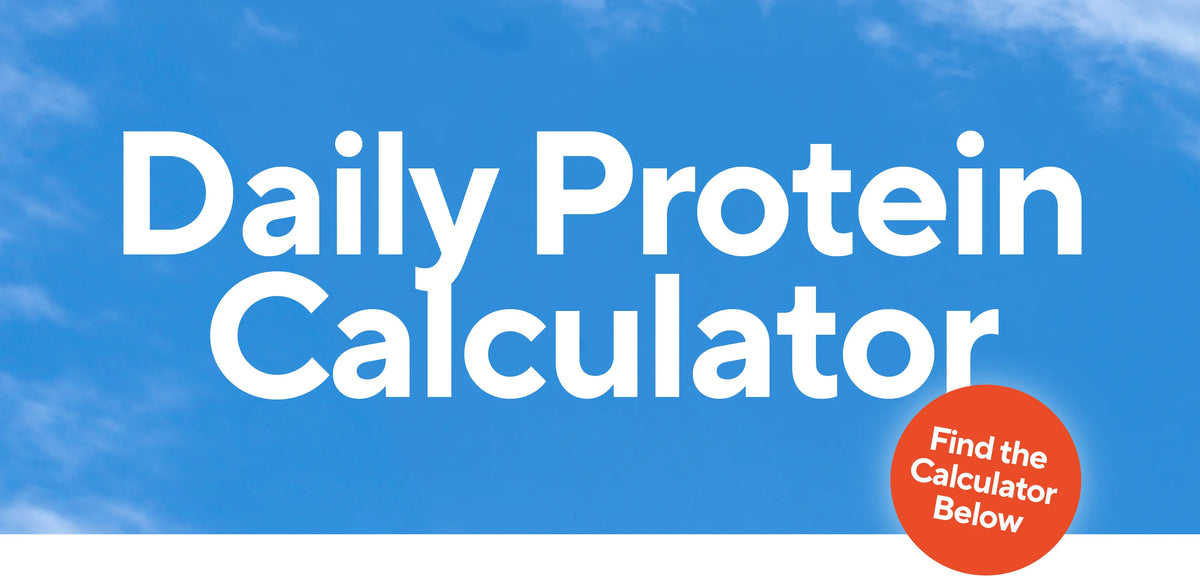
Ever Wonder How Much Protein You Need?
Understanding your daily protein requirements is crucial if you're looking to improve athletic performance, build muscle, lose weight, or maintain a healthier lifestyle.
Protein plays a key role in muscle growth, recovery post-workout, and weight management by increasing satiety and preserving lean muscle mass.
Looking to increase your protein intake? Give our plant-based Protein a try. It contains 22+ grams of protein per serve, and is HASTA Certified.
About the calculator
Your protein needs depend on your activity level, age, and body weight. Use this calculator for an estimate, and refer to the Physical Activity Level definitions below to input the right details.
Consult a healthcare professional before making major diet or exercise changes.
Protein Calculator - Calculate Your Daily Protein Needs | Roam | NZ and AU
👉 Increase your protein intake with Roam Protein.
What's my physical activity level?
Minimal physical activity beyond daily tasks. Mainly sedentary behaviours.
Engages in light physical activity, but below the health guidelines of 30-minutes of moderates-intensity exercise 5 times per week.
Regular moderate-intensity activities or exercise (minimum of 30-minutes) at least 5 times per week.
Includes activities such as fast walking, jogging, hiking, cycling, or recreational sports.
Regular exercise at higher intensity 5 to 7 times per week, including 1 or 2 high-intensity sessions.
Includes activities such as cycling, running, swimming, CrossFit, gym or vigorous team sports.
Intense daily training or competitive sports, with regular high-intensity sessions.
Exercises 5 to 7 times per week, with most sessions longer than 30 minutes, plus 1 to 3 high intensity sessions.
Cool, now what do I do?
Now that you know your daily protein requirement, you can track what you're actually consuming!
Use a free meal-tracking app like EasyDiet Diary or MyFitnessPal to monitor your meals for a couple of weeks.
This will help you to identify your average daily protein intake and highlight any gaps, particularly during breakfast and lunch.
If you find you're falling short, we're here to help you meet those protein goals.
Common Questions About Protein Intake
Women’s protein needs similar to men’s once adjusted for body size and activity. Active women benefit from 1.6–2.2 g/kg/day, with higher intakes towards the higher end of the range during weight loss or strength training phases.
Protein also helps with satiety and stable blood sugar, which can be valuable for women juggling busy routines. Hormonal changes (e.g., menopause) may increase the importance of muscle-preserving strategies like higher protein and resistance exercise.
During pregnancy, protein needs are higher because your body is supporting the growth of your baby and changes in your own tissues. A good target is around 1.2–1.6 g of protein per kilogram of body weight per day. Consult with your healthcare provider for personalised guidance.
👉 Read more in our article about Returning to Sport Postpartum
Breastfeeding increases energy and protein demands. Many women benefit from 1.2–1.6 g protein per kg of bodyweight per day to maintain milk supply, recover from pregnancy, and support daily activity.
Prioritising steady protein across meals helps with satiety and stable energy.
Hydration and calorie intake also matter.
If you’re struggling to meet your needs through food, a plant-based protein powder with a minimal ingredient list could help.
Always check with your doctor or dietitian for specific advice.
👉 Read more in our article about Returning to Sport Postpartum
When reducing calories, a slightly higher protein intake helps protect muscle mass and keeps you fuller for longer.
A range of 1.6–2.0 g/kg/day is often recommended by nutritionists during weight loss phases.
Our calculator adjusts calories down for weight loss but your protein intake is calculated based on your physical activity level. So it may be worthwhile aiming for the higher (2.0g) end of the range could work for you. Pairing protein with fibre-rich foods makes meals more satisfying and satiating.
👉 You may also like: The Future of Food in a Weight Loss Era
Building muscle requires both resistance training and sufficient protein. Most research suggests 1.6–2.2 g protein / kg bodyweight /day is optimal for supporting muscle repair and growth.
Spreading protein evenly across the day (20–40 g per meal) helps maximise muscle protein synthesis. Carbohydrates also matter for training intensity and recovery. If your training volume is high, aim closer to the upper range.
👉 Also read: Maximising Muscle Gain with Protein Intake and The Importance of Protein for Endurance Athletes
🛒 Shop: Roam Protein contains over 22 grams of protein per serve to assist with muscle growth.
Meeting higher protein targets on a plant-based diet is absolutely possible with some planning.
Good sources include beans, lentils, tofu, tempeh, nuts, seeds, and plant-based protein powders.
Combining different sources (e.g., legumes + grains) ensures a broader amino acid profile. For active people, 1.4–2.0 g/kg/day is a practical target.
Our calculator can help you estimate what that looks like in grams per day, and you can build meals around that.
👉 Read: The Importance of Protein for Vegan Athletes and Vegan Protein: The Gentle Choice for Your Gut
Children need protein to grow, but their requirements are lower per kilogram than adults. For most kids, around 1.0–1.2 g/kg/day is sufficient. If your child is very active (e.g., in sports training), they may need a little more.
The focus should be on balanced meals with a variety of protein sources. Roam Protein can be used to top up protein needs and has an ingredient list that is suitable for children.
Check out some of our recipes here.
👉 Read More: Protein and Nutrition for Active Teenagers: A Guide for Parents
Teenagers are in a growth phase and often active, which means higher protein needs. Aiming for 1.2–1.6 g/kg/day supports both growth and training recovery.
Whole food meals with protein at breakfast, lunch, and dinner are key. Protein powders can help fill gaps, but shouldn’t replace food.
Encourage teens to fuel properly rather than under-eating, especially if they’re involved in endurance or strength sports.
👉 Read More: Protein and Nutrition for Active Teenagers: A Guide for Parents
Sarcopenia — age-related loss of muscle — increases risk of frailty and falls.
Research supports at least 1.2 g/kg/day, with some experts recommending up to 1.6 g/kg/day when paired with strength training.
Protein distribution across the day and leucine-rich foods are especially beneficial. Protein supplements like Roam Protein can help if appetite is low. Early action is key to maintaining muscle quality with age.
👉 Read more: Understanding Sarcopenia
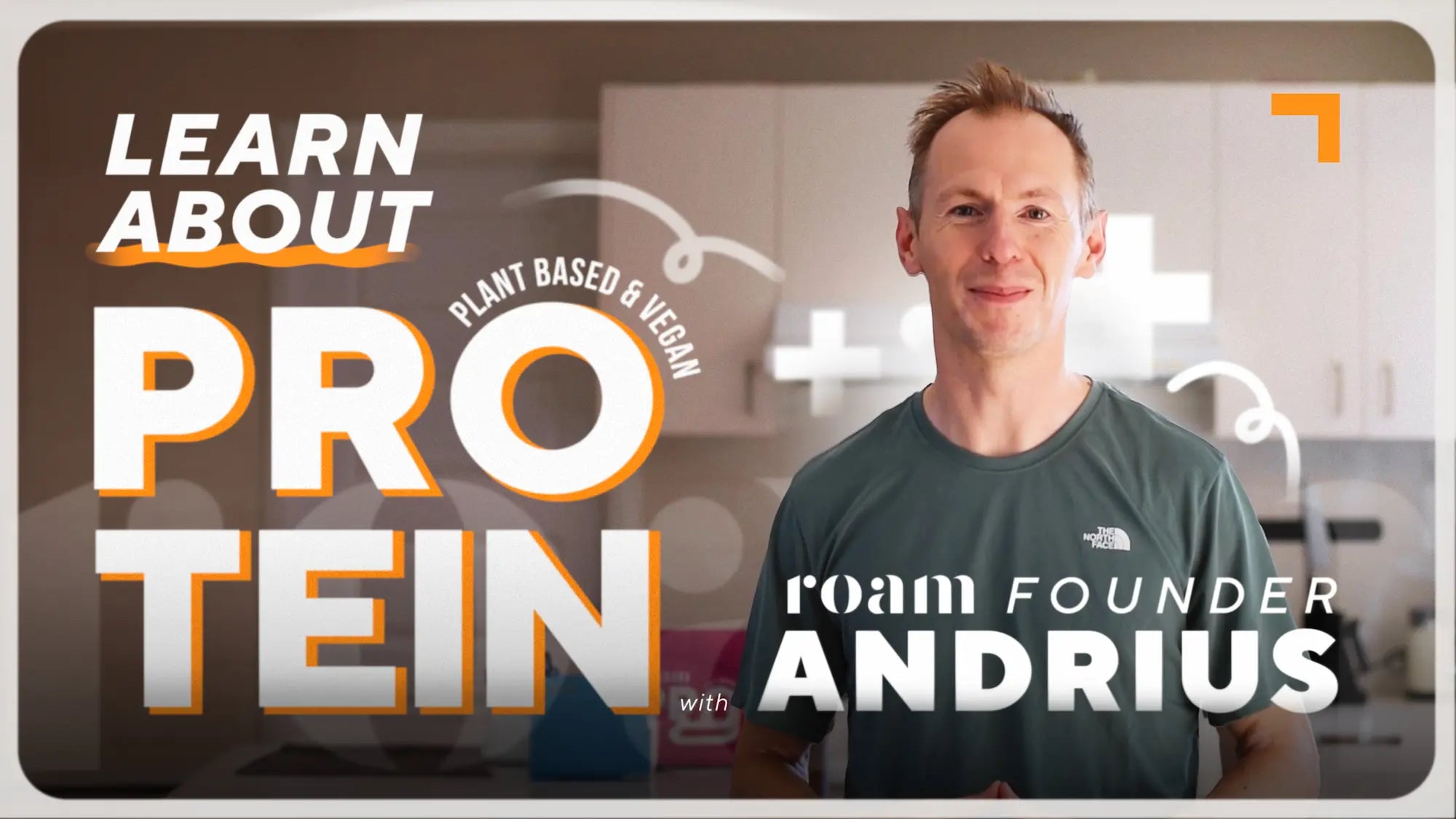
Shop Protein
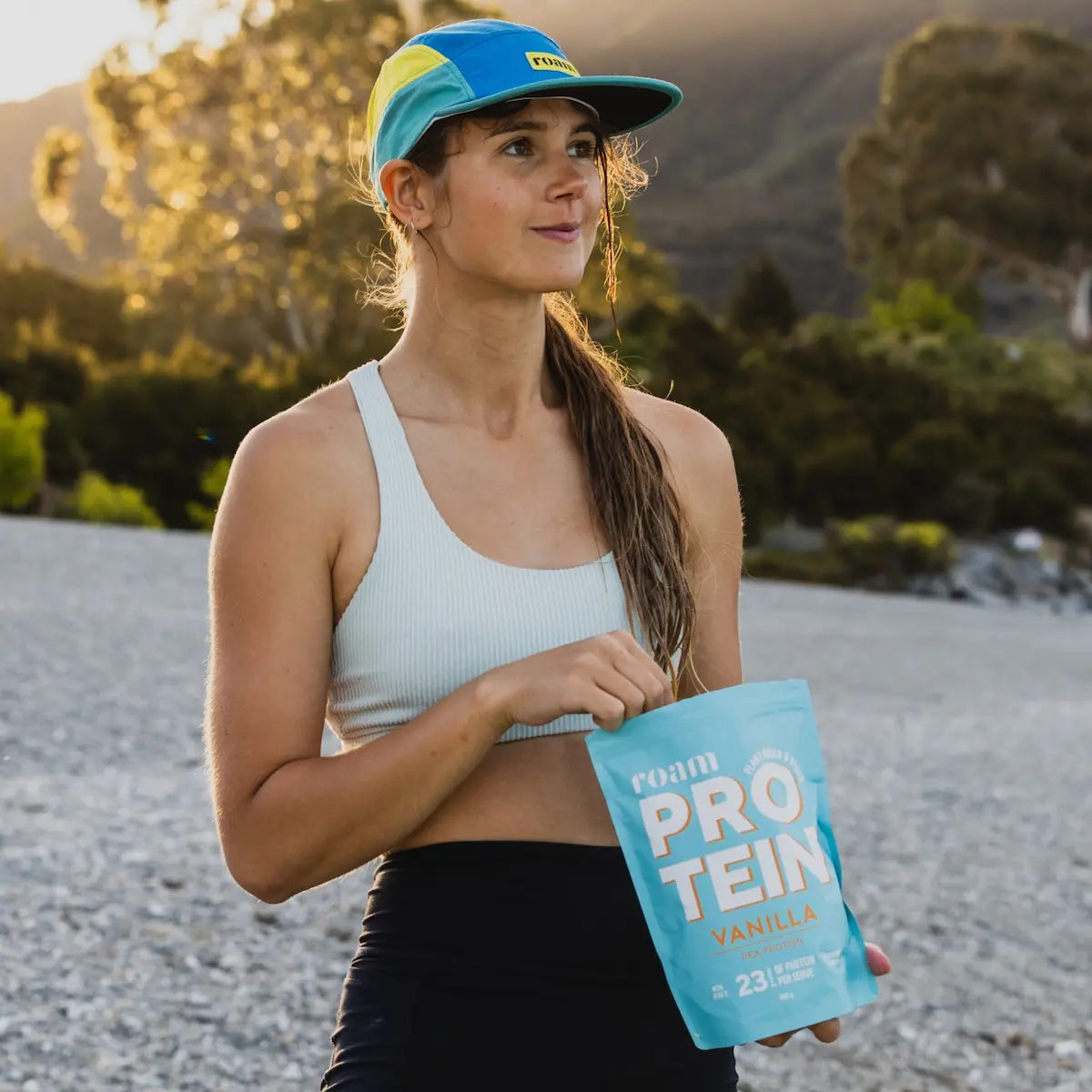
Tips to Meet Your Daily Protein Requirements
- Ensure daily protein comes from a range of sources to fulfill individual amino acid needs.
- Distribute protein intake throughout the day. Try to consume a protein rich breakfast and lunch to feel satisfied throughout the day.
- Target 20 to 40 grams of protein per main meal.
- Accelerate recovery by consuming 20 to 40 grams of protein shortly after training.
How much protein is in...
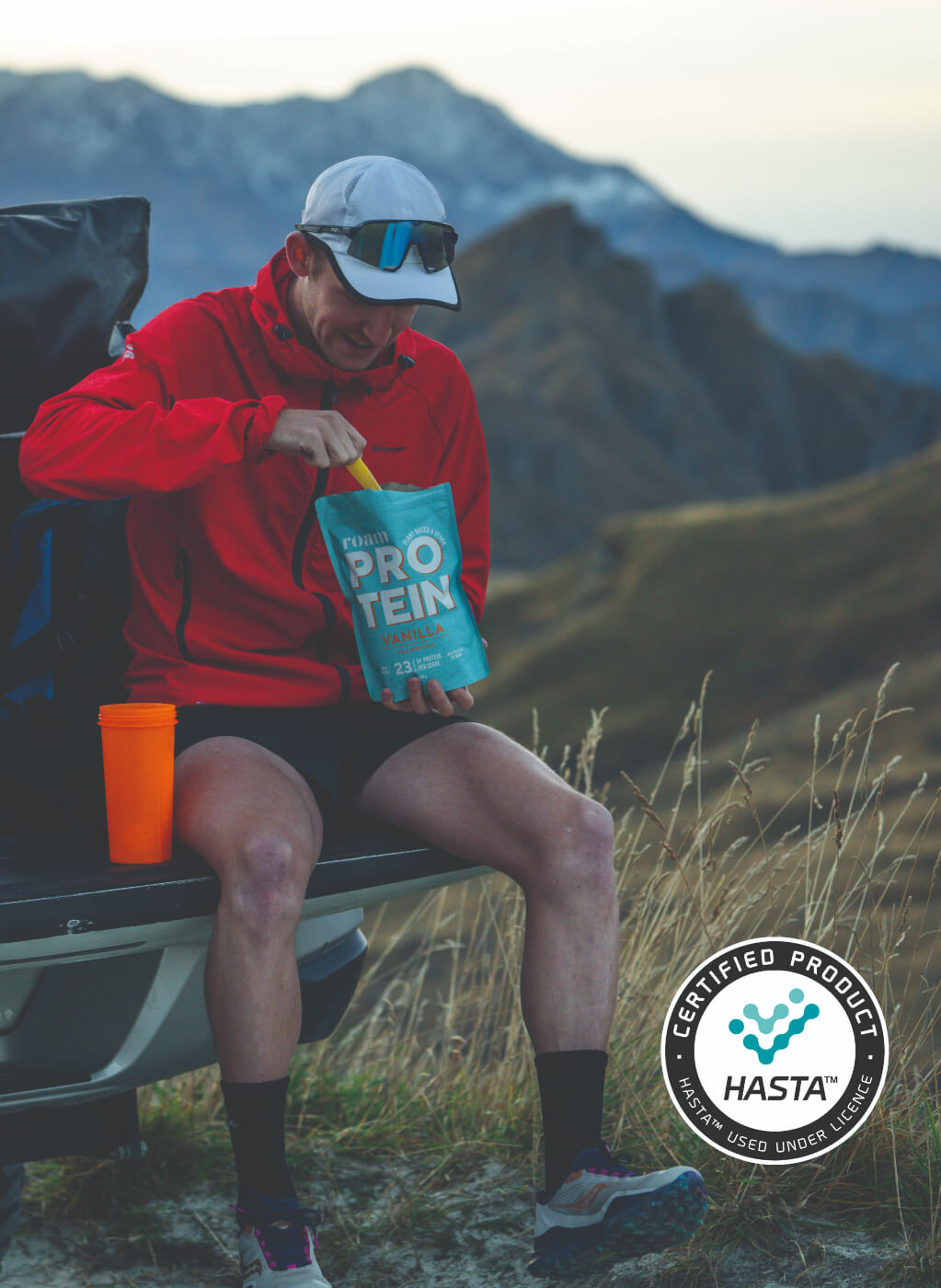
Roam Protein
At Roam, we take pride in crafting protein powders with a distinct advantage.
Roam Protein is formulated with only five, hand-selected ingredients, ensuring a pure and wholesome product.
We designed Roam Protein to support muscle maintenance and recovery, helping you stay strong and active, even during periods of reduced calorie intake or when managing weight.
Its high protein content also helps keep you feeling fuller for longer, which can aid in managing appetite and maintaining a balanced diet.
Each batch is independently tested for over 200 substances banned by the World Anti-Doping Agency, guaranteeing transparency and giving you complete confidence that there are no hidden nasties.
What's more, our protein powders are vegan, gluten-free, soy-free and nut-free, and Low FODMAP, catering to a wide range of dietary needs.

